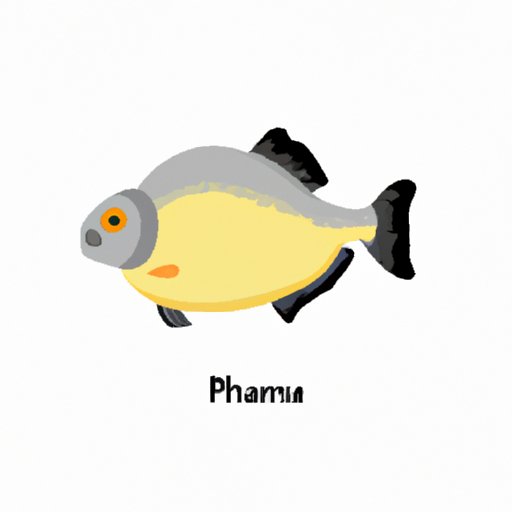
I. Introduction
Piranhas are known for their sharp teeth, powerful jaws, and predatory nature, which often leads people to wonder if they are safe to consume. Interestingly, piranhas are actually a food source for some cultures, and are known to be a delicacy in certain regions of South America. But can you eat a piranha? In this article, we’ll explore the truth about eating piranhas and consider the different angles of this topic, including myths and misconceptions, safety, ethics, and nutrition.
II. The Truth About Eating Piranhas: Separating Fact from Fiction
There are many myths and misconceptions surrounding piranhas, which often leads to confusion about whether they are safe to eat. One of the most common myths is that piranhas are poisonous, but this is simply not true. In fact, piranhas are perfectly safe to handle and eat if they are prepared properly. Another myth is that piranhas will eat anything in their path, even attacking humans, but this is also false. While piranhas are indeed carnivores, they do not typically attack humans, and they are more likely to feed on smaller fish and insects in their habitat.
Scientifically speaking, piranhas are edible, and they have been eaten for centuries by indigenous tribes in the Amazon and other regions of South America. In fact, some people suggest that piranhas are actually more nutritious than many other types of fish, with high protein content and a rich flavor.
III. A Culinary Adventure: Trying Piranha as a Local Delicacy
While many people may be hesitant to try piranha due to cultural unfamiliarity, the truth is that in some regions, it is considered a local delicacy. Those who have tried piranha report that it is actually quite delicious and savory, with a unique taste that is different from other types of fish. Preparation methods vary depending on the location, but some popular methods include grilling, frying, or even slow-cooking in a stew or soup.
However, it is important to note that not all piranha dishes are created equal. In some areas where piranhas are consumed, they may not be properly handled or cooked, which can increase the risk of foodborne illness or other health problems. It is always important to be aware of the source and preparation of any food you consume, particularly when it comes to more exotic or unfamiliar dishes.
IV. Is it Safe to Eat Piranhas? Here’s What You Need to Know
While piranhas themselves are not poisonous, there are still some potential risks associated with consuming them. One of the main concerns is the presence of parasites or diseases, which can be passed on to humans if the piranha is not properly cooked or prepared. Additionally, some species of piranhas may carry toxins in their flesh, which can be harmful if ingested.
To minimize the risks associated with eating piranhas, it is important to follow proper cooking and handling techniques. This includes ensuring that the fish is thoroughly cooked, using safe and hygienic preparation methods, and sourcing the fish from a trusted and reputable supplier.
V. The Ethical Considerations of Eating Piranhas: An Exploration
When it comes to the ethics of eating piranhas, there are a number of factors to consider. Some people may argue that it is not ethical to consume a species that is typically considered a predator, while others may argue that it is simply a part of certain cultural traditions and practices.
Additionally, there are environmental concerns to consider. Overfishing and habitat destruction have led to a decline in many piranha populations, and consuming these fish may further contribute to their depletion. It is important to be mindful of the impact that our food choices have on both the environment and the species themselves.
VI. Exploring the Nutritional Value of Piranhas: Should We Consider Eating Them?
From a nutritional standpoint, piranhas are actually quite nutritious. They are high in protein, low in fat, and rich in vitamins and minerals such as vitamin B12, selenium, and potassium. However, it’s important to note that not all piranhas are created equal in terms of nutritional content. Some species may be higher or lower in certain nutrients, so it’s important to research and understand the nutritional profile of the type of piranha you are consuming.
For those looking to incorporate more sustainable and nutritious sources of protein into their diet, piranhas may be worth considering. However, it’s important to be mindful of the potential risks and to ensure safe and ethical sourcing, preparation, and consumption.
VII. Conclusion
In conclusion, while piranhas may not be the most common or familiar food source, they are indeed edible and have been consumed by some cultures for centuries. By dispelling myths and misconceptions, exploring the culinary adventure of trying piranhas, considering the potential risks and benefits, and reflecting on the ethical and environmental considerations, we can begin to understand this unique food source on a deeper level. Ultimately, the decision to eat piranhas is a personal one, but with awareness and understanding, we can make informed choices that align with our values and preferences.





